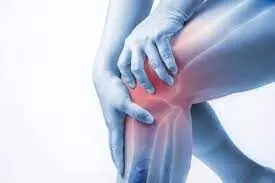Research reveals a novel hamstring sparing technique of MPFL reconstruction
- byDoctor News Daily Team
- 01 October, 2025
- 0 Comments
- 0 Mins

A novel hamstring sparing technique of MPFL reconstruction A composite graft made of medial retinaculum and quadriceps tendon can be used instead of hamstring graft for medial patellofemoral reconstruction in recurrent dislocation of patella. Jithin mohan et al conducted a unicentric, prospective observational study in 60 patients with recurrent dislocation of patella with normal Q angle and without trochlear dysplasia. A composite graft composed of medial patella retinaculum and quadriceps was harvested, one end was sutured at medial superior 2/3rd junction of patella with ethibond. The other end of graft fixed at schottles point with a bio screw. Patients were followed up at 6 weeks, 3 months, 6 months and then yearly. A preoperative and post operative Lysholm score and Kujala score were used for comparison. The key findings of the study were: • Most of the study population was between age group 21- 30 years (38.3%) youngest was 14 years of age and oldest with 45 years. • The average age of study population was 26.83 +/- 9.127. • 65% of the study population were female. • There was a significant improvement in Kujala and Lysholm scores. • Only 3 out of 60 patients developed further instability that was managed non surgically. • There was no statistically significant association with ligamentous laxity and the outcome. The authors concluded – “The functional outcome of novel technique of medial patellofemoral reconstruction is comparable with conventional techniques. It has added advantage of medial plication and VMO advancement. In our technique the subluxation rate is low, no incidence of patella fracture as it is an anchorless technique and no donor site morbidity. Since it does not require anchor on the patella it is cost effective also.” Further reading: Functional outcome of medial patella femoral ligament reconstruction: a prospective study of novel hamstring sparing technique without patella anchors International Journal of Research in Orthopaedics Mohan J et al. Int J Res Orthop. 2025 May;11(3):513-518 DOI: https://dx.doi.org/10.18203/issn.2455-4510
Disclaimer: This website is designed for healthcare professionals and serves solely for informational purposes.
The content provided should not be interpreted as medical advice, diagnosis, treatment recommendations, prescriptions, or endorsements of specific medical practices. It is not a replacement for professional medical consultation or the expertise of a licensed healthcare provider.
Given the ever-evolving nature of medical science, we strive to keep our information accurate and up to date. However, we do not guarantee the completeness or accuracy of the content.
If you come across any inconsistencies, please reach out to us at
admin@doctornewsdaily.com.
We do not support or endorse medical opinions, treatments, or recommendations that contradict the advice of qualified healthcare professionals.
By using this website, you agree to our
Terms of Use,
Privacy Policy, and
Advertisement Policy.
For further details, please review our
Full Disclaimer.
Recent News
Merck Keytruda wins European Commission nod for lo...
- 30 October, 2025
UP NEET 2025 round 3 allotment results postponed
- 30 October, 2025
Achin Gupta to succeed Umang Vohra as Cipla MD, GC...
- 30 October, 2025
Mumbai shocker: KEM Hospital doctor stabbed by col...
- 30 October, 2025
Daily Newsletter
Get all the top stories from Blogs to keep track.


0 Comments
Post a comment
No comments yet. Be the first to comment!